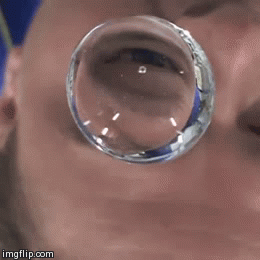Water droplets are hilarious
When an astronaut drops a drop of water at the International Space Station, it appears as if the water droplet is oscillating, as shown in the video clip.

We cannot observe this phenomenon on the earth due to the earth's gravity. Regardless of this gravity effect, if an astronaut drops two types of fluids and of the same radius the densities of which are and and the surface tensions of which are and determine the ratio of oscillation frequencies between liquid and liquid
Details and Assumptions:
- Fluid densities are and
- Surface tensions are and
The answer is 0.99.
This section requires Javascript.
You are seeing this because something didn't load right. We suggest you, (a) try
refreshing the page, (b) enabling javascript if it is disabled on your browser and,
finally, (c)
loading the
non-javascript version of this page
. We're sorry about the hassle.
We do this by "dimensional analysis", looking at the units of the parameters.
The surface tension \sigma is measured in N/m=kg/s^2. The radius R is meters, the density \rho is kg/m^3 and the frequency \omega is 1/s. In order to get the correct unit for the frequency we need to combine the other 3 quantities as \alha (\sigma/ \rho R^3)^0.5. The numerical factor \alpha depends on the mode of the oscillation. If the two droplets oscillate in the same mode and the radius is the same, the ratio of the frequencies will be (\sigma1/\sigma2 \rho2/\rho1)^0.5 = 0.99.